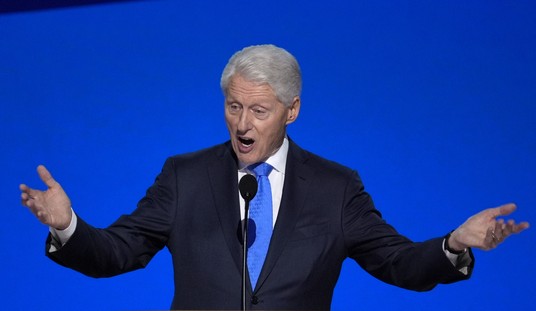Investors Business Daily hammers Barack Obama’s budget approach in two articles today as based on myths and fairy tales. First, John Merline gets into the gritty details in rebutting Obama’s notion that we can solve the monumental budgetary problems we face with slightly higher federal income tax rates on the rich. Merline offers a telling chart that shows the percentage of federal income tax revenue provided by the top 1%, and explains how little impact Obama’s promise to roll back the Bush-era rates will have:
But in making the case for tax hikes, Obama has made several claims that, while they may strike a chord with voters, perpetuate myths about taxes and the rich. …
Obama would let the top two tax brackets go to where they were before those rates were set. He’d raise taxes for those making as little as $200,000, not just those worth at least a million dollars, and maintain the rates for everyone else.
However, when it comes to “affordability,” lower rates for the “rich” were the smallest part of the Bush tax cut. Extending those rates would reduce revenues by about $700 billion (not the $1 trillion figure Obama has peddled) over 10 years, according to Treasury data. Letting these rates expire is assumed — and thus not counted — in Obama’s 12-year plan.
But keeping all the other Bush tax rates would “cost” about $3 trillion — making them, by Obama’s logic, four times as “unaffordable” as the cuts on the rich.
Whatever issues we have at the moment with the federal tax system, the results show that the argument that it’s insufficiently progressive are simply false. Merline’s chart shows that the top 1% of earners have paid an increasing share of overall federal income-tax revenues since 1980:
The issue of revenues may well be due to the progressive nature of the tax system. Any system this dependent on the top 1% is vulnerable to sharp swings based on economic performance. On the federal level, this is somewhat tempered by having a lower rate on capital gains, but those still add significant revenue to the Treasury. California, for instance, has this same problem only to a greater degree, thanks to their very progressive income tax system, which relies more on capital-gains tax revenue. A flat tax would provide a much more stable basis on which to produce reliable revenue.
Adding back the $700 billion over ten years hardly makes a dent in the projected $9-trillion plus deficits over the next ten years. The problem isn’t that the wealthy aren’t paying their fair share, it’s that there isn’t enough income on that level to tax to close the gap. In order to maintain current spending levels, we would need confiscatory rates of nearly 100% from not just the top 1%, but more likely closer to the top 10% or 15% of Americans. Those are, however, the people we most need as investors in the private sector to create jobs and maintain a healthy economy.
We aren’t facing a revenue crisis; we are in the middle of a spending crisis. Michael Ramirez makes the point bluntly in his excellent editorial cartoon for IBD today:
It’s the same old populist fairy tale that got us into the spending crisis we have at the moment. Hopefully, Americans have grown up and stopped buying it.
Also, be sure to check out Ramirez’ terrific collection of his works: Everyone Has the Right to My Opinion, which covers the entire breadth of Ramirez’ career, and it gives fascinating look at political history. Read my review here, and watch my interviews with Ramirez here and here. And don’t forget to check out the entire Investors.com site, which has now incorporated all of the former IBD Editorials, while individual investors still exist.









Join the conversation as a VIP Member